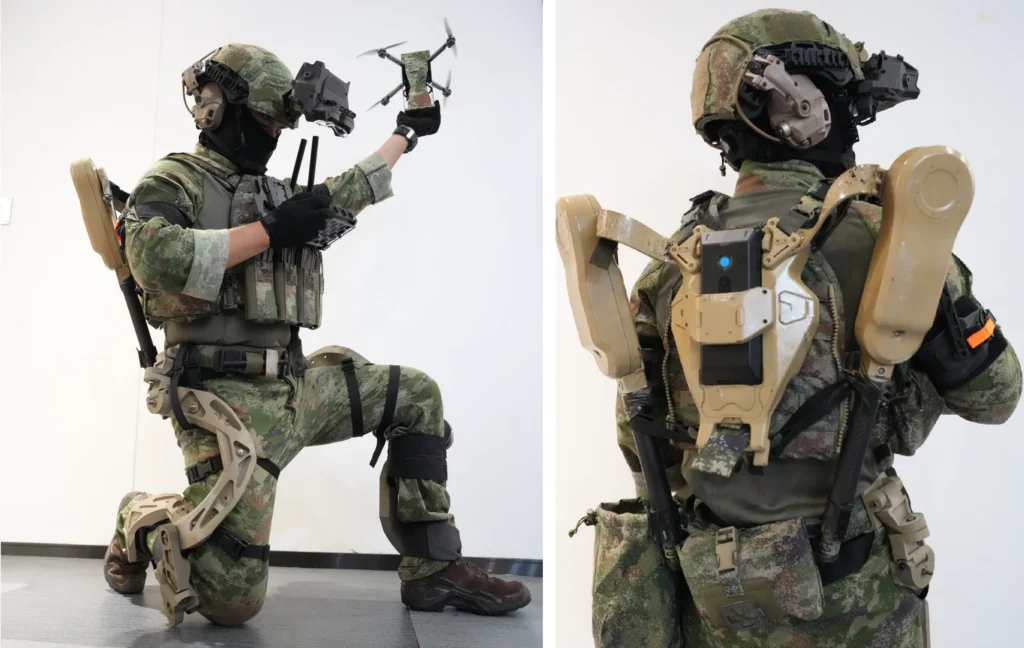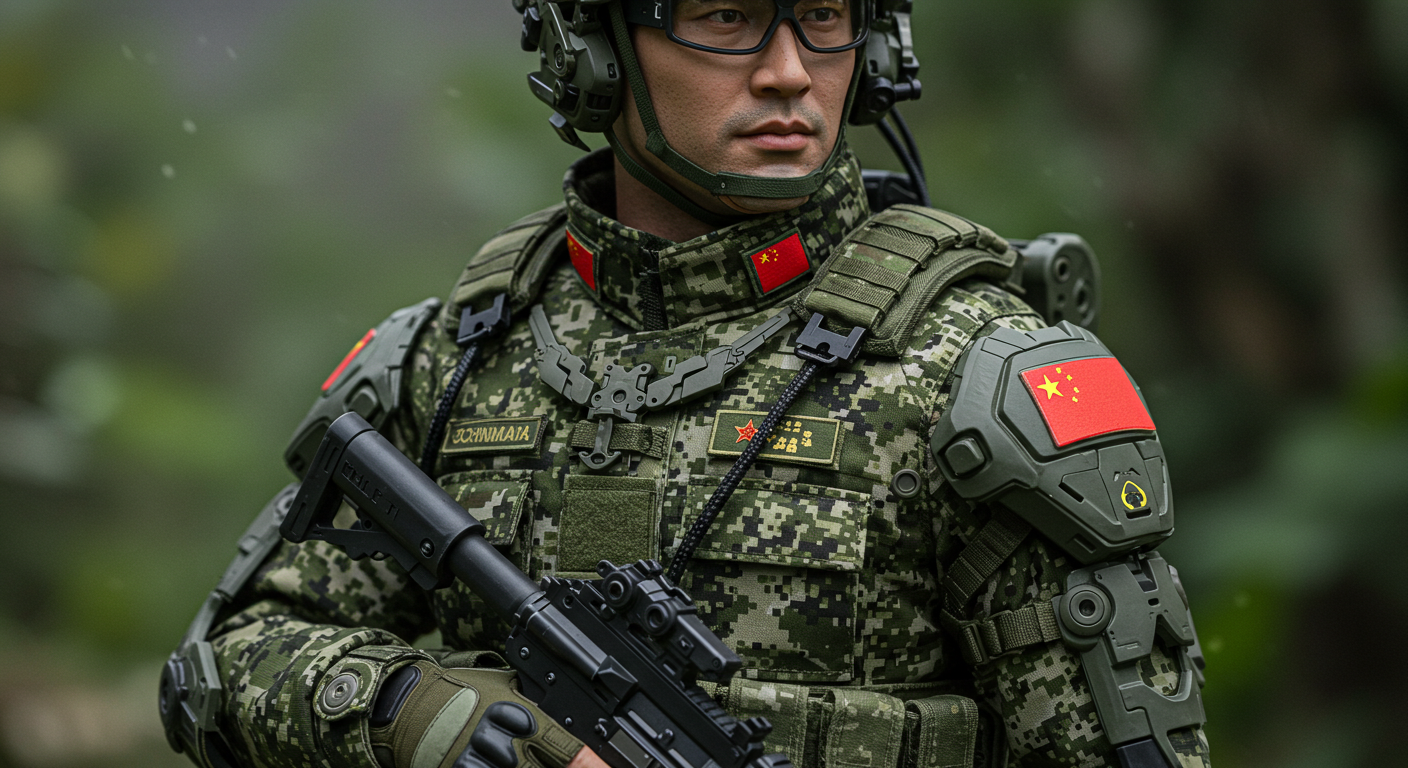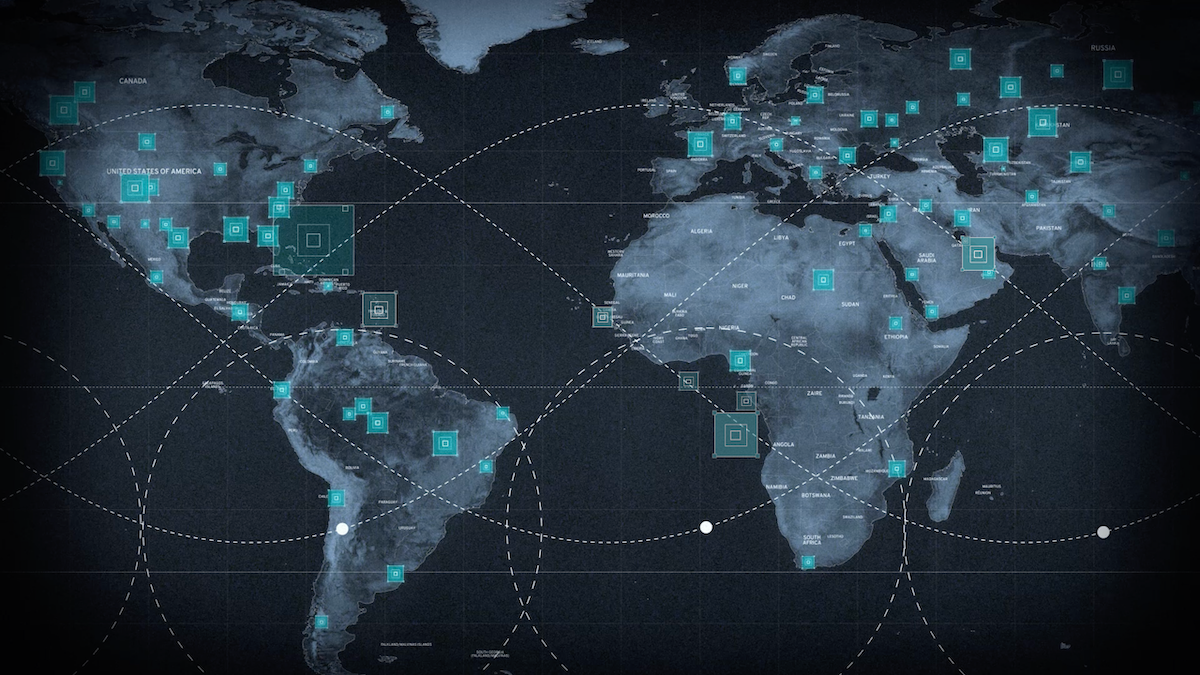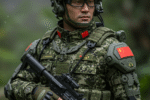China’s Kestrel Defense has introduced a next-generation powered exoskeleton suit, a development that marks a clear step forward in the country’s push to enhance its military capabilities through advanced technology.
This innovative suit is engineered to improve the endurance, mobility, and situational awareness of soldiers, with a particular focus on those tasked with operating drones and battlefield systems. Photos circulating on Chinese social media offer a glimpse of the gear in action, showing a soldier equipped with mechanical leg supports, a modular backpack, a head-mounted display, and even the ability to launch drones directly from the suit.
This unveiling points to China’s ambition to create “supersoldier” systems, blending physical augmentation with cutting-edge digital tools. The exoskeleton is designed with specific military roles in mind, catering to drone operators, artillery units, and reconnaissance teams. Its articulated arm and leg supports provide physical assistance, allowing the wearer to remain stable in crouched or kneeling positions for long stretches—a practical feature for tasks like remote piloting that demand focus and stamina.

The lightweight frame, reinforced by powered joints, enables soldiers to carry heavier loads without the usual strain, a capability that could prove invaluable for troops transporting equipment across rugged terrain or holding positions during extended missions. One of the standout features is the compact system built into the suit for launching and controlling small unmanned aerial vehicles (UAVs). This setup lets soldiers deploy drones straight from the field, expanding their reach for surveillance or reconnaissance without needing external support. In one striking image, a soldier is seen holding a camouflaged quadcopter, likely intended for short-range surveillance or reconnaissance in urban environments.
The exoskeleton’s modular backpack, attached to a central spine-like structure, houses a power source and seems to include data link equipment, forming the backbone of the suit’s onboard electronics. The helmet features a head-mounted display and an augmented reality visor, delivering real-time situational awareness and seamless integration with drone feeds. This allows the operator to monitor and direct UAVs with precision. The soldier’s tactical vest incorporates a drone controller in the left hand, while the right hand grips the small quadcopter, ready for deployment. Wrist-mounted screens and other visible gear hint at additional digital tools, possibly including health monitors, navigation aids, or encrypted communications systems, further enhancing the suit’s versatility.
Kestrel Defense has kept technical details under wraps, but promotional materials suggest the exoskeleton is optimized for small drone operations and intelligence, surveillance, and reconnaissance (ISR) tasks. The suit supports the use of small quadcopters and reconnaissance drones, which can be launched directly from the operator’s position. The company has also hinted at compatibility with other lightweight platforms deployable on the move, broadening its potential applications. Analysts see this as part of a worldwide shift in military modernization, where robotics, wearable computing, and AI-powered systems are increasingly fused to elevate infantry performance.
In scenarios where GPS signals might be jammed or disrupted, troops equipped with this exoskeleton and its independent drone capabilities could maintain a decisive edge, relying on their own systems to navigate and gather intelligence. This development fits into China’s larger effort to keep pace with Western military technologies, a race that includes similar projects in the United States, Russia, and Europe. The shared focus across these nations reveals a vision of future warfare centered on hyper-connected soldiers who can operate autonomous platforms with ease.
While the suit remains in the prototype phase, its public debut indicates Kestrel Defense’s intent to refine it for practical battlefield use. Whether deployed for border patrol, reconnaissance, or urban combat, the exoskeleton could act as a mobile command node, offering troops the ability to move swiftly, extend their visibility, and handle greater loads. The introduction of this next-gen combat exoskeleton reflects China’s determination to stay competitive in the evolving landscape of military innovation.
As it progresses from prototype to operational status, the suit promises to reshape how drone operators and reconnaissance teams function, providing a window into the future of infantry warfare where human capability and advanced technology converge seamlessly.










